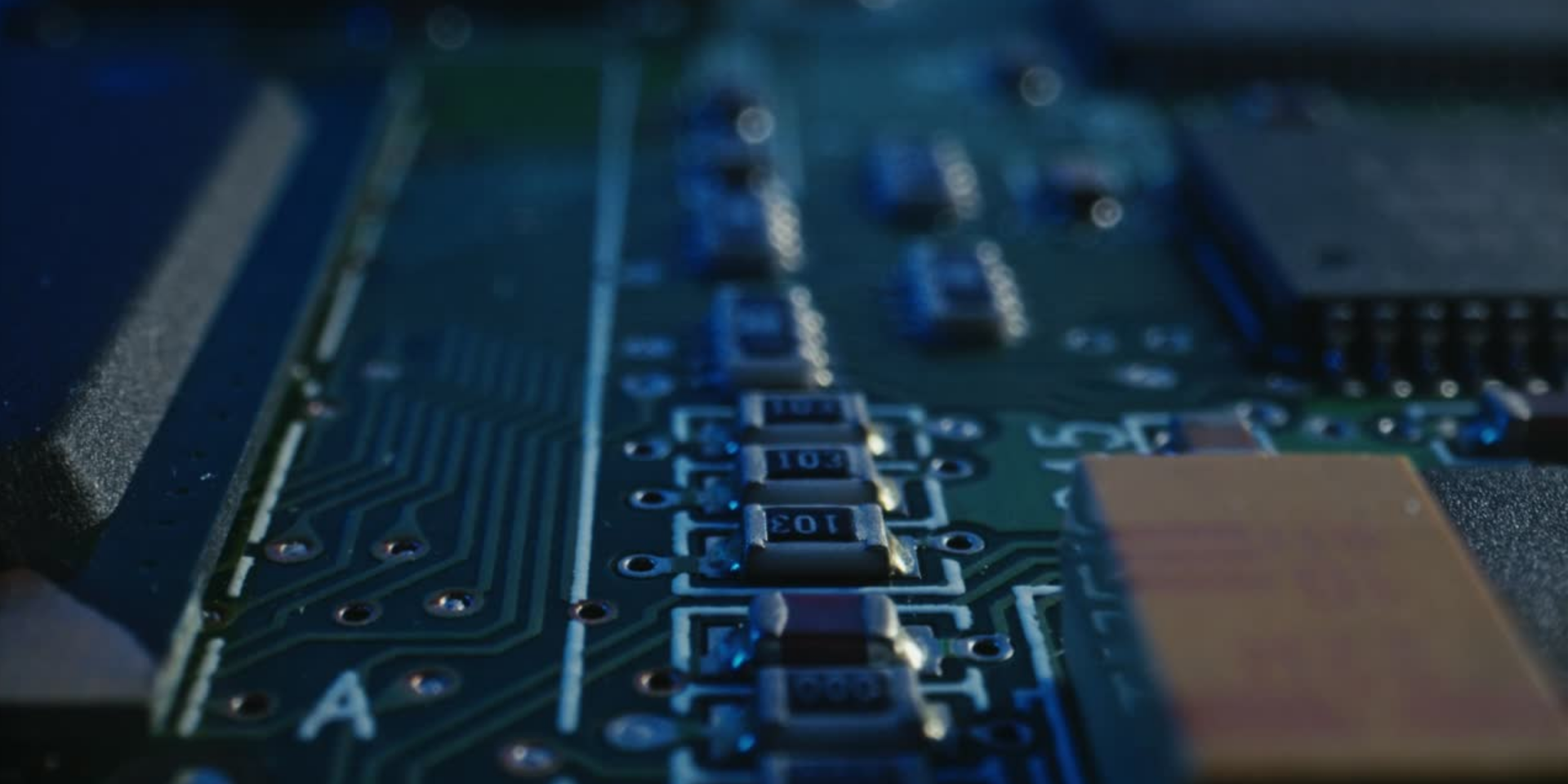Overview
The Motherboard And Its Functions
Types Of Motherboards Form Factor
ATX vs Micro-ATX vs Mini-ITX
The Right Motherboard For Your Needs
First Off, What On Earth Is A Motherboard?
The motherboard is a printed circuit board of a computer that is the biggest board in a computer case. It allocates power and provides connectivity between the PC components such as the CPU (Central Processing Unit), RAMs and GPUs (Graphic Processing Units).
There are many different types of motherboard sizes (also known as form-factor by tech geeks) designed to fit different types of appliances and devices that we use in our daily lives.
We have the standard ATX, followed by Micro-ATX, Mini-ITX, Nano-ITX and finally, the smallest of them all, the Pico-ITX. There are other sizes in the family, but today we’ll be covering the most mainstream ones found in today’s desktop PCs.
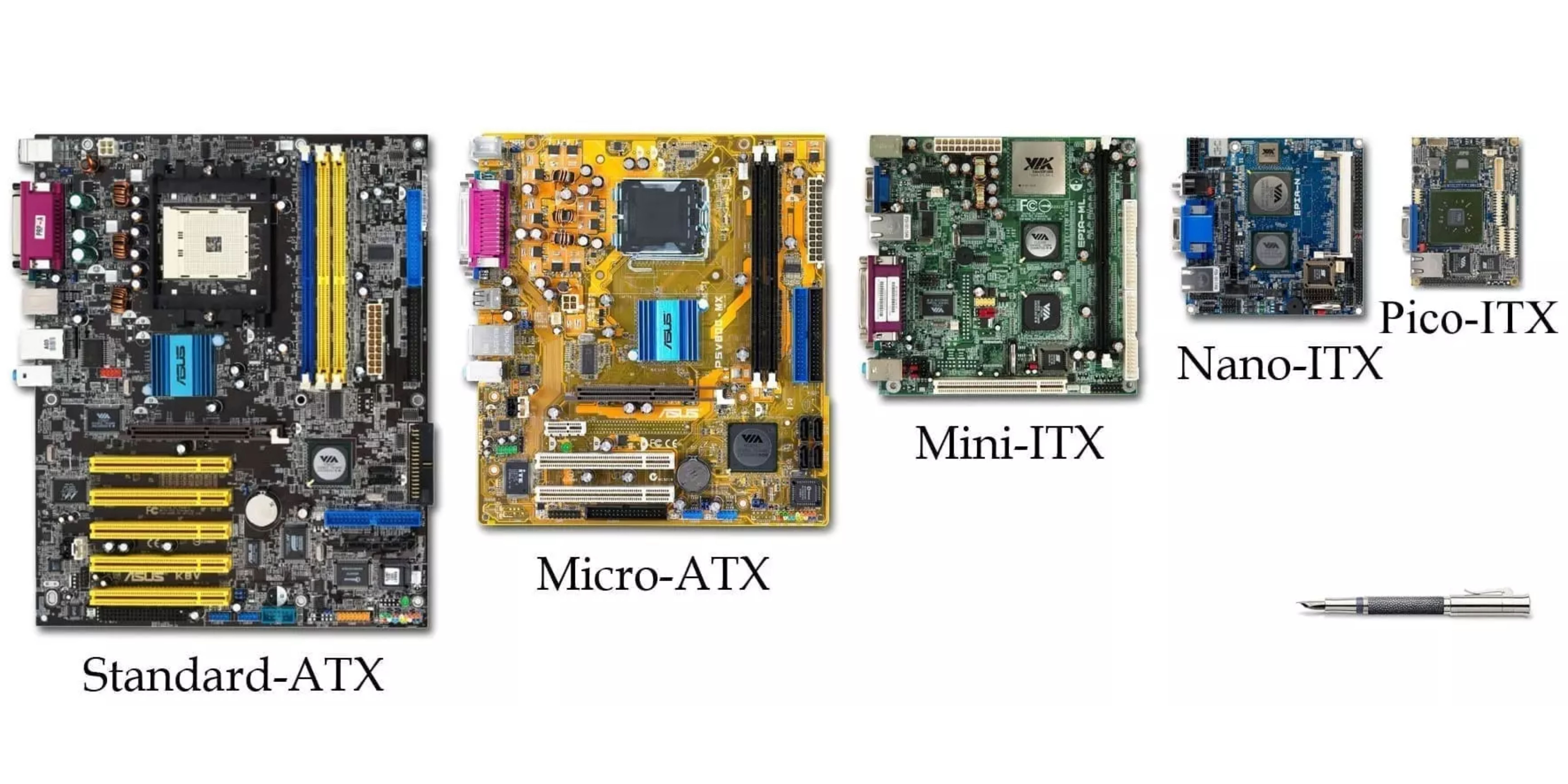

Source : Lanner
The Pico-ITX is tiny when compared to almost all of its peers - about 75% smaller than the Mini-ITX. It was designed and developed by VIA Technologies, to open up the pathway of innovation for smarter and smaller IoT devices.
On the other hand, the Nano-ITX is a fully integrated board engineered to consume a very low level of power. It is often found in smart digital entertainment devices such as our smart TVs, cable boxes, and thin devices to name a few.
However, these two motherboards are not used in any gaming PCs as they are not compatible with the existing components in the market. And even if compatible components are found, the jury is out on whether the Nano or Pico-ITX’s capability is able to support any reasonable gaming.
Now, the question is: which of these 3 popular motherboards - Standard ATX, Micro-ATX or Mini-ITX - should you get for your new gaming rig?
ATX vs. Micro-ATX vs. Mini-ITX - What’s The Difference?
PCIe Slots
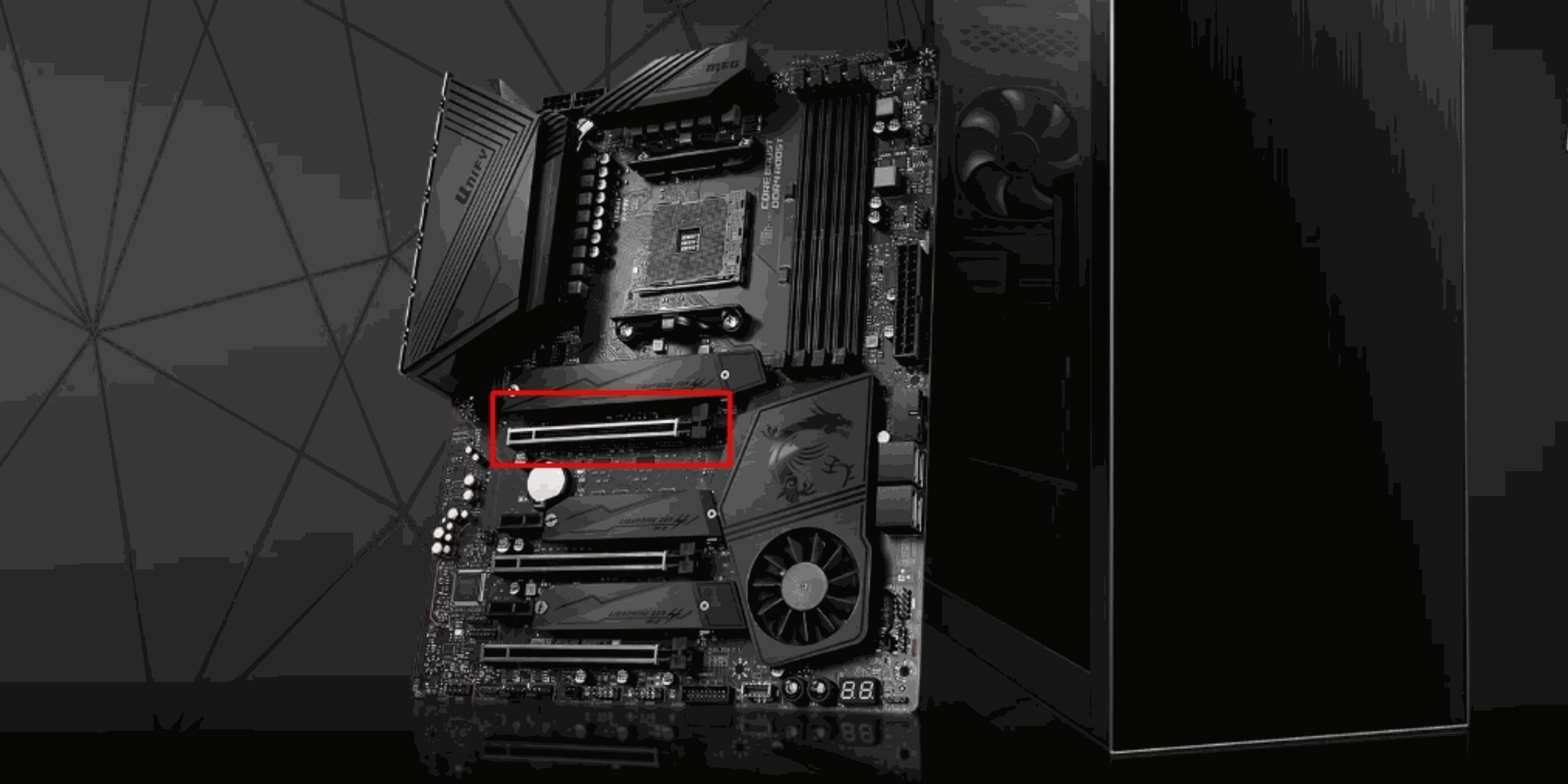
Source : CGDirector
The PCIe (Peripheral Component Interconnect Express) is a type of interface that connects your high-speed components to your computer. On the motherboard, they take on the form of PCIe slots that you attach your supported devices to such as the GPUs or M.2 SSDs.
They are often important for the customization of additional functionalities to your PC or if you are looking to build a custom PC with multi-GPU setups for high-end designing work such as 3D Animation and Rendering.
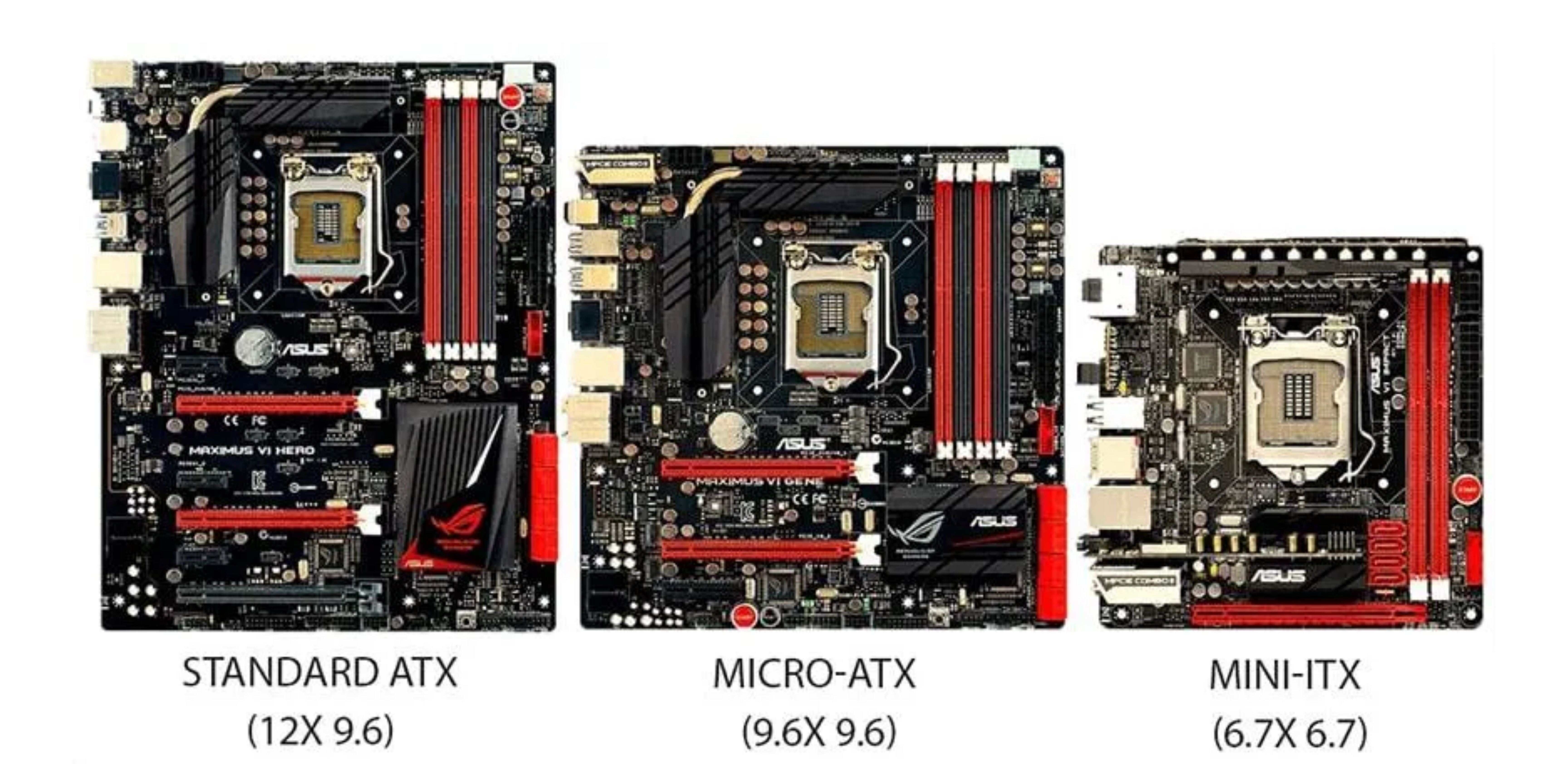
Source : Perfect Tech Reviews
The standard ATX (Advanced Technology Extended) or ATX for short, is the most preferred form-factor by gamers in the market today due to its high compatibility and top-class features. Its larger size of 12 inch x 9.6 inch gives it more room to feature more PCIe which allow users to install multiple GPUs or M.2 SSDs which is ideal for high-end gaming.
The Micro-ATX, better known for its short form : the mATX, has almost the same dimension as the ATX but is slightly shorter. It is very similar to the ATX in terms of specification and is more preferred by gamers when it comes to building a budget gaming PC due to its appealing price.
However, as a result of its shorter length, its PCIe slots are compensated in the process hence, it lacks the support of multi-GPUs and have lesser PCIe slots available for the expansion of components. If your end goal is to do some extreme gaming like running a game on a triple 4K monitor setup that only SLI or Crossfire is able to, then this motherboard would not be for you.
Capable of fitting in almost any chassis due to its small size, the Mini-ITX has won the hearts of many despite usually only featuring a single PCIe lane. Its advantageous small size is highly compatible with small form-factor (SFF) cases which makes it favourable for users who require mobility or portability.
Nevertheless, it is important to note that the single PCIe slot in this motherboard means that you are only able to run a single GPU. That means high-end gaming is not possible.
RAM Capacity
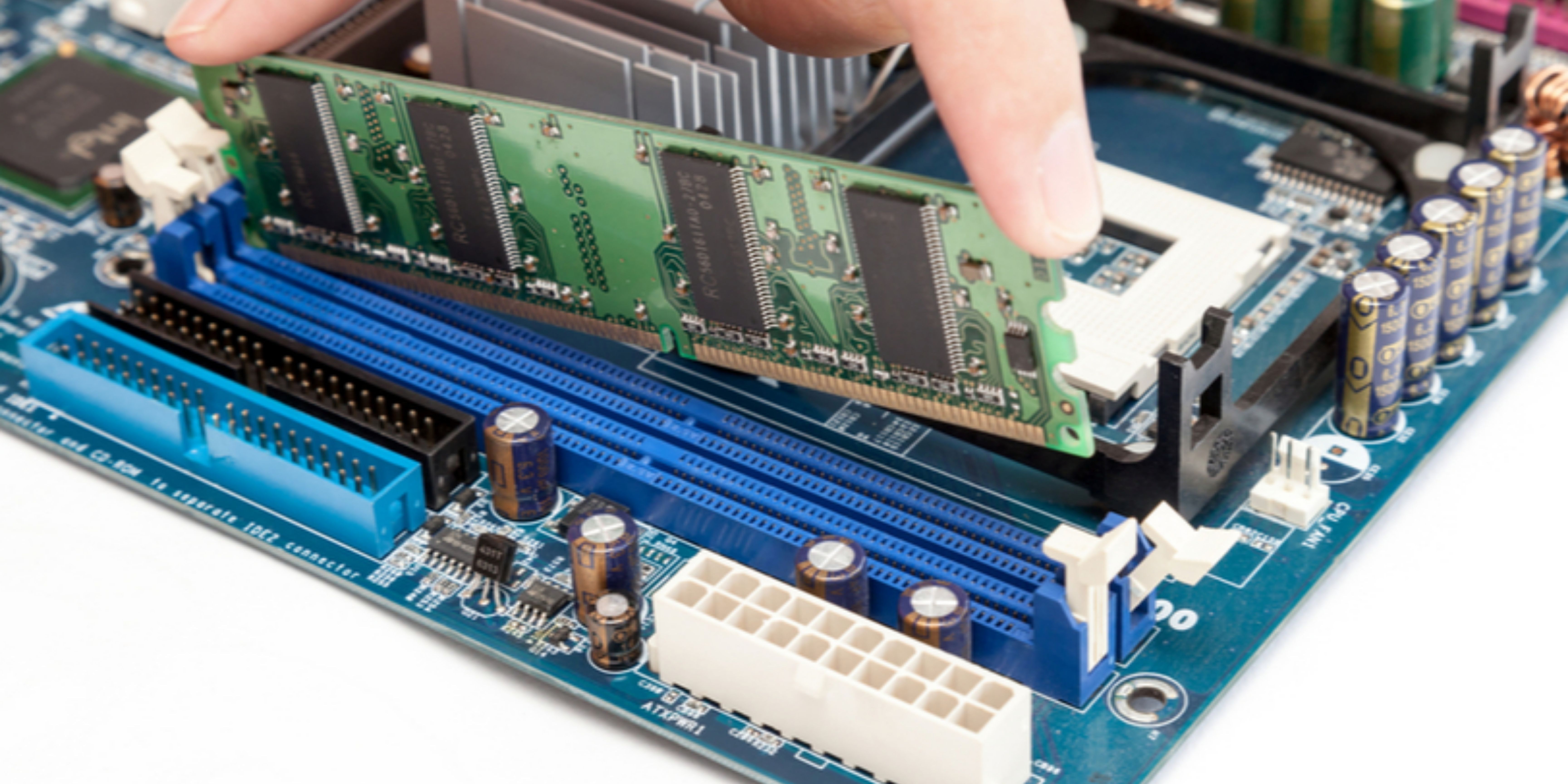
Source : Bleuwire
When it comes to RAM (memory) capacity, the ATX and the mATX both have 4 RAM slots which is more than able to meet your memory needs and give you the optimum gaming experience.
The Mini-ITX on the other hand, mostly only supports 2 RAM slots which as far as gaming goes, would normally suffice. While not demanding much of the GPUs, tasks like video editing and graphics designing relies heavily on the PCs memory for seamless performance.
Therefore, having more RAM slots on your motherboard will greatly benefit your designing workload. Which would be a problem if you have the Mini-ITX motherboard.
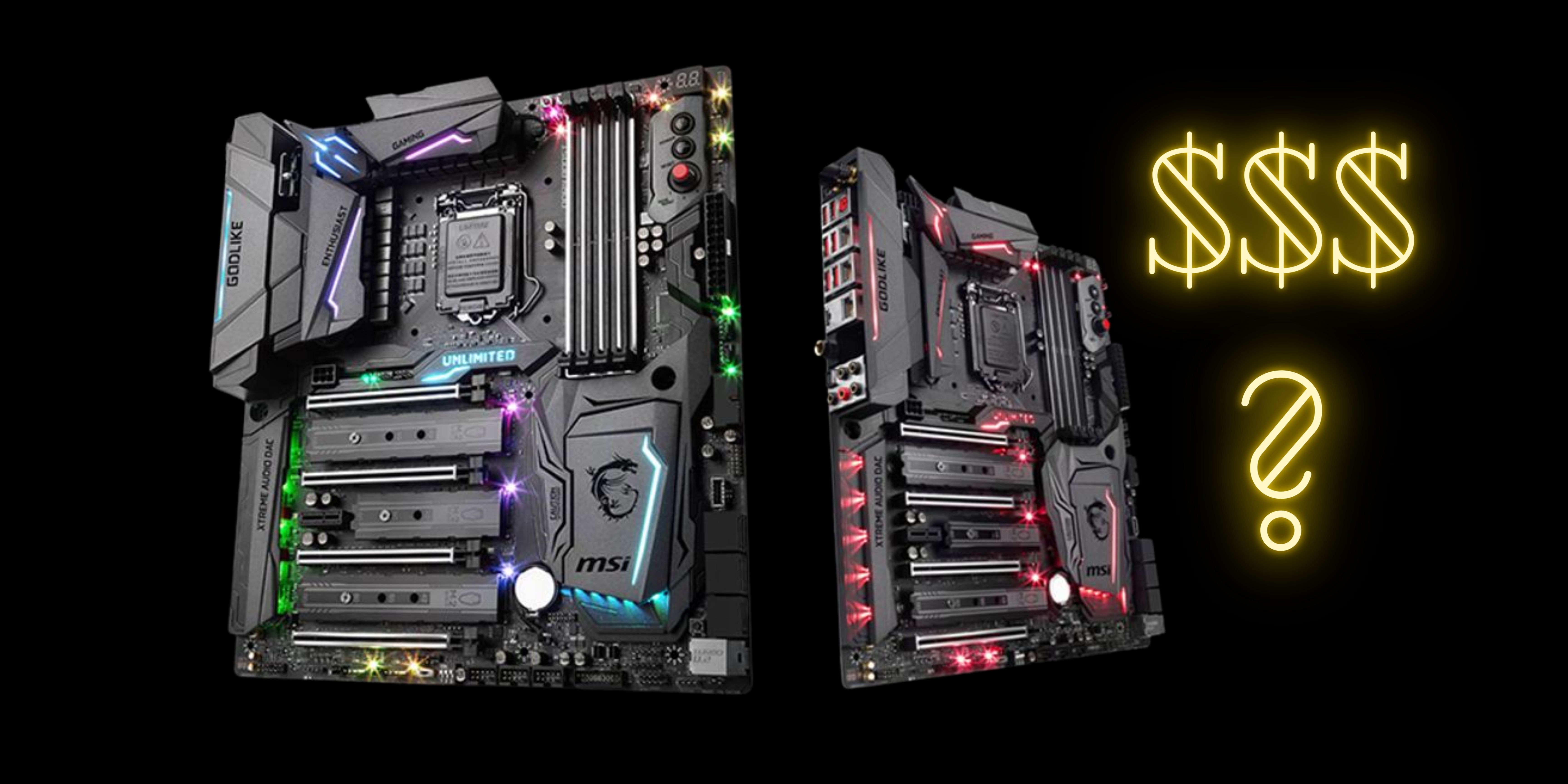
Price Range
As mentioned above, the mATX is highly preferred by gamers when building a gaming rig on limited funds due to its attractive price - they are basically the “stripped version” of the ATX motherboards.
The mATX more or less shares the same density of features and components as the ATX except they have lesser PCIe slots. Moreover, they are demanded highly in the market and cheaper to produce when compared to the ATX.
You would think, since the mATX is smaller than the ATX and has fewer PCIe slots, hence, it is cheaper, then the Mini-ITX ought to be the cheapest amongst the three options, right?
Wrong.
In fact, you’d be surprised to know that the Mini-ITX is the most expensive option out of the said motherboards. As the Mini-ITX motherboards have limited space, more engineering is placed into designing the components to fit the Mini-ITXs such as the built-in WiFi which drives the price up.
Which in terms of rank, makes the Mini-ITX the most expensive, followed by the ATX and lastly, the most affordable and cheapest of them all, the mATX.
Compatibility
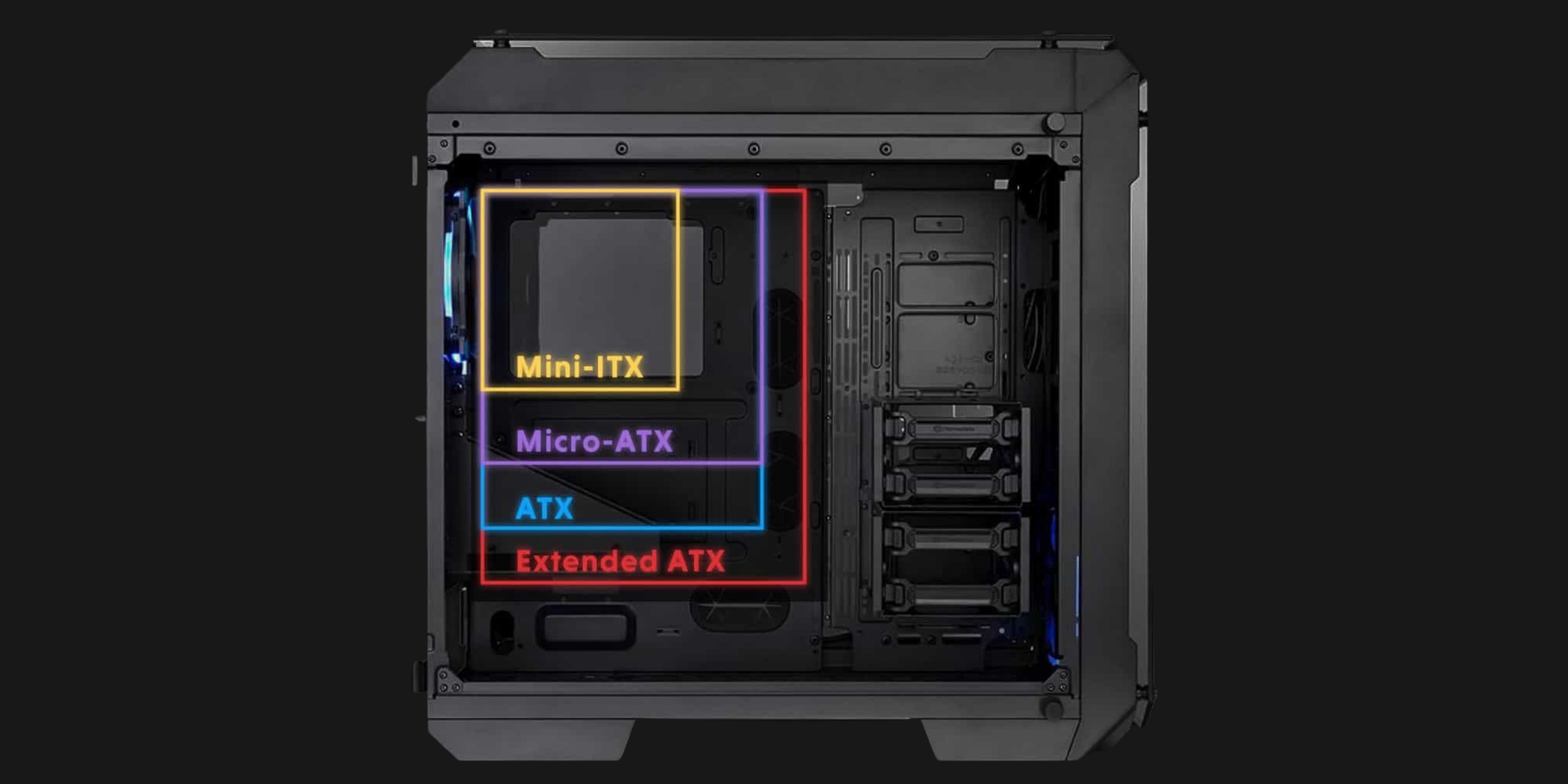
Source : WePC
At the end of the day, the important thing here is that the size of each motherboard will determine the gaming chassis you can or cannot use. If you are planning on building a SFF PC then, the ATX and mATX will not fit in at all.
While the Mini-ITX is able to fit into any gaming chassis, it will very likely be awkward due to the massive empty space. It is also important to note that if you are deciding to go with the Mini-ITX, you will have a smaller range of compatible components due to its size.
As the Mini-ITX motherboards target a niche market, it is costly and not highly demanded. As a result of this, not many components are designed to meet the Mini-ITX specifications. Which is why many Mini-ITX motherboards have built-in features as the mainstream components have no place in a Mini-ITX case.
A Table Of Comparison
To summarize the above and to get a bird’s-eye view for easier explanation on the next part, here’s a side by side comparison of each motherboard.
Which Motherboard Form Factor Should You Choose?
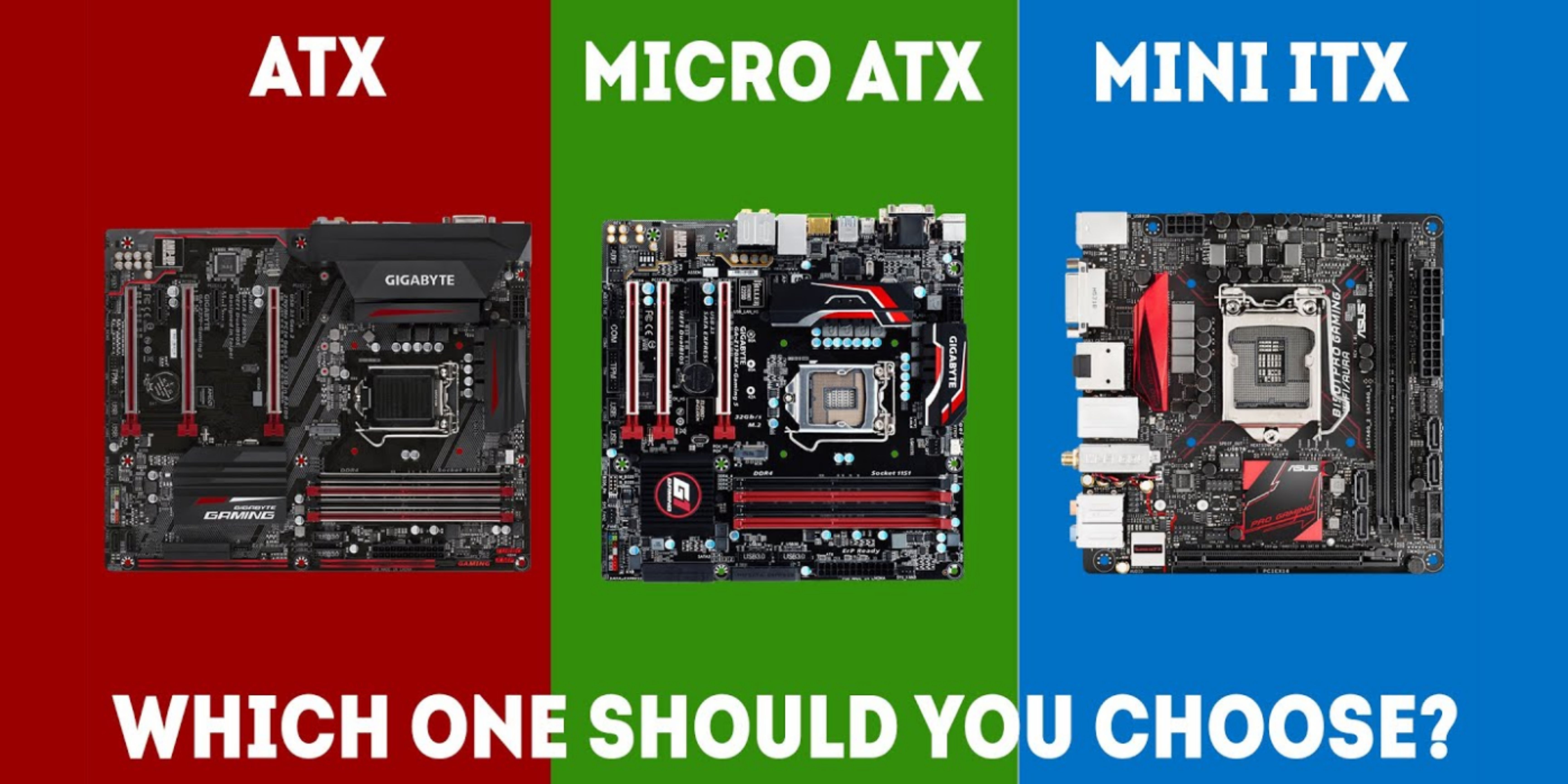
Source : Gaming Scan
If you are looking to build a Gaming PC
When it comes to gaming, the most important components that impact your gaming experience would be the performance of your GPU, CPU and RAM. Which is why most gamers would try to squeeze their funds into affording the latest version of those 3 components. Especially the GPU.
In that regard, the mATX would be the best motherboard for you as they offer excellent value for your money. Price tag aside, the mATX does not lack the standard features a ATX has and has sufficient PCIe and RAM slots to support the games modern-day requires.
And honestly, dual GPUs for gaming are an overkill these days.
If you are looking to build a Workstation PC
The slightly more expensive ATX would be a better choice. Editing and rendering software these days requires a massive amount of graphic memory and RAMs in order to operate efficiently. Some editing softwares in fact, powers on GPUs instead of CPU, making dual GPUs a necessity for designers and developers.
For some occupations that deal with massive amounts of data such as data scientists, the GPU becomes an important component to keep up with their efficiency. Compared to the CPU, the GPU is more favourable as it has the ability to process data parallely thanks to their several thousand cores.
In these kinds of cases, the ATX motherboard that has multiple PCIe slots and is multi-GPU friendly would be essential to support the workload.
However, if upgrading to a single, better GPU is able to meet your workload requirements, then it is recommended to get the more affordable mATX and invest in a more efficient GPU as mATX is similar to the ATX but with fewer PCIe slots.
Not only will you get to enjoy the newest GPU technology, you also won’t have to live off bread until your next payday.
If you are looking to build a SFF PC
Then a Mini-ITX motherboard would be the option for you. Although high in price, this mini motherboard is capable of fitting into SFF cases which is ideal for mobility and small spaces.
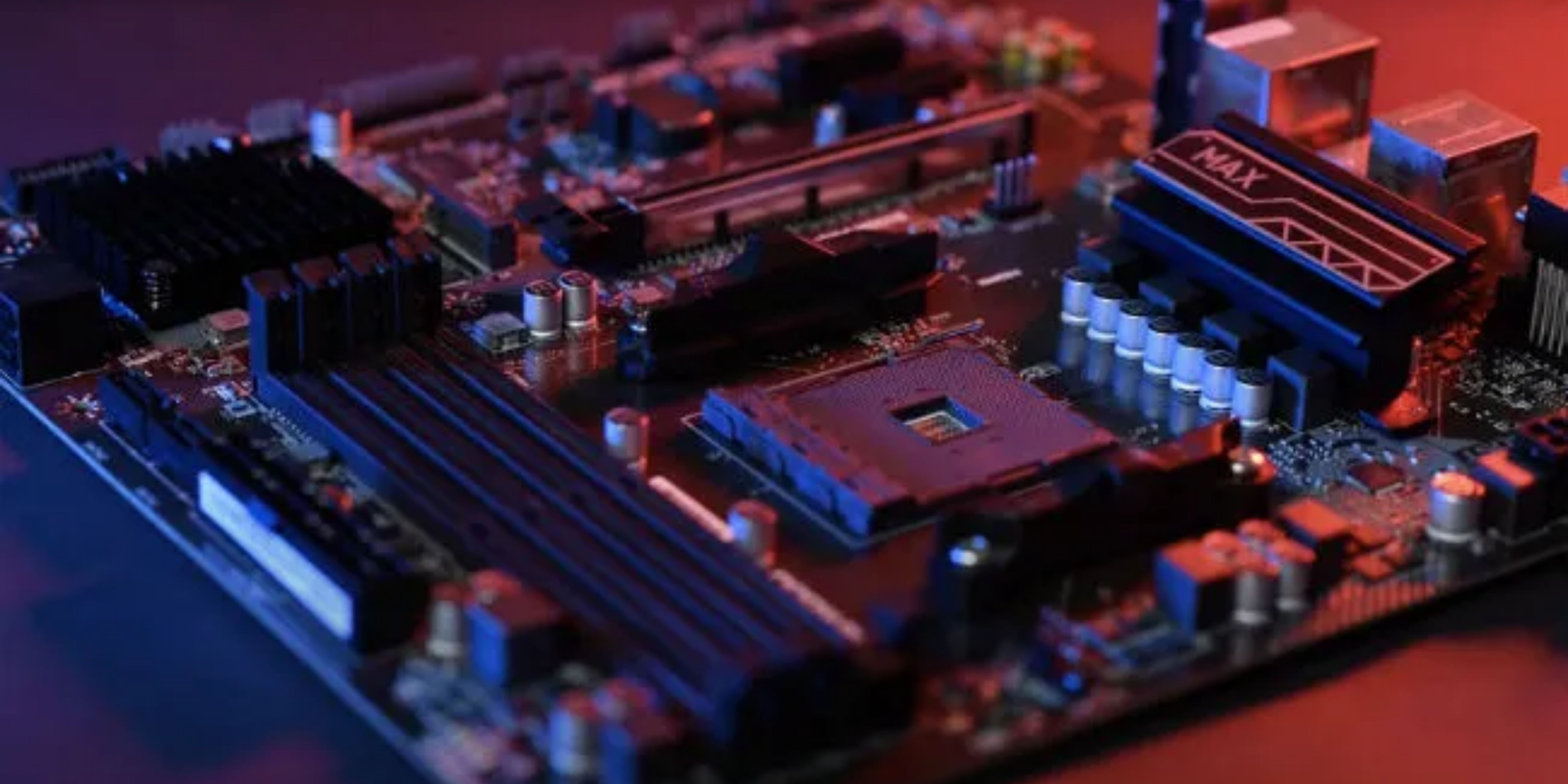
Source : Digit
Conclusion
The type of motherboard you ultimately decided to go home with really depends on the purpose of your computer and your budget.
However, it is important to note that just because a motherboard is from a well-known brand, it doesn’t mean that the motherboard is guaranteed to be a great one. Although the brand can be used as a guideline, research on the chosen motherboard model to understand its performance is of the utmost importance.

Source : CGDirector
The PCIe (Peripheral Component Interconnect Express) is a type of interface that connects your high-speed components to your computer. On the motherboard, they take on the form of PCIe slots that you attach your supported devices to such as the GPUs or M.2 SSDs.
They are often important for the customization of additional functionalities to your PC or if you are looking to build a custom PC with multi-GPU setups for high-end designing work such as 3D Animation and Rendering.


Source : Perfect Tech Reviews
The standard ATX (Advanced Technology Extended) or ATX for short, is the most preferred form-factor by gamers in the market today due to its high compatibility and top-class features. Its larger size of 12 inch x 9.6 inch gives it more room to feature more PCIe which allow users to install multiple GPUs or M.2 SSDs which is ideal for high-end gaming.
The Micro-ATX, better known for its short form : the mATX, has almost the same dimension as the ATX but is slightly shorter. It is very similar to the ATX in terms of specification and is more preferred by gamers when it comes to building a budget gaming PC due to its appealing price.
However, as a result of its shorter length, its PCIe slots are compensated in the process hence, it lacks the support of multi-GPUs and have lesser PCIe slots available for the expansion of components. If your end goal is to do some extreme gaming like running a game on a triple 4K monitor setup that only SLI or Crossfire is able to, then this motherboard would not be for you.
Capable of fitting in almost any chassis due to its small size, the Mini-ITX has won the hearts of many despite usually only featuring a single PCIe lane. Its advantageous small size is highly compatible with small form-factor (SFF) cases which makes it favourable for users who require mobility or portability.
Nevertheless, it is important to note that the single PCIe slot in this motherboard means that you are only able to run a single GPU. That means high-end gaming is not possible.
RAM Capacity

RAM Capacity

Source : Bleuwire
When it comes to RAM (memory) capacity, the ATX and the mATX both have 4 RAM slots which is more than able to meet your memory needs and give you the optimum gaming experience.
The Mini-ITX on the other hand, mostly only supports 2 RAM slots which as far as gaming goes, would normally suffice. While not demanding much of the GPUs, tasks like video editing and graphics designing relies heavily on the PCs memory for seamless performance.
Therefore, having more RAM slots on your motherboard will greatly benefit your designing workload. Which would be a problem if you have the Mini-ITX motherboard.

As mentioned above, the mATX is highly preferred by gamers when building a gaming rig on limited funds due to its attractive price - they are basically the “stripped version” of the ATX motherboards.
The mATX more or less shares the same density of features and components as the ATX except they have lesser PCIe slots. Moreover, they are demanded highly in the market and cheaper to produce when compared to the ATX.

Price Range
As mentioned above, the mATX is highly preferred by gamers when building a gaming rig on limited funds due to its attractive price - they are basically the “stripped version” of the ATX motherboards.
The mATX more or less shares the same density of features and components as the ATX except they have lesser PCIe slots. Moreover, they are demanded highly in the market and cheaper to produce when compared to the ATX.
You would think, since the mATX is smaller than the ATX and has fewer PCIe slots, hence, it is cheaper, then the Mini-ITX ought to be the cheapest amongst the three options, right?
Wrong.
In fact, you’d be surprised to know that the Mini-ITX is the most expensive option out of the said motherboards. As the Mini-ITX motherboards have limited space, more engineering is placed into designing the components to fit the Mini-ITXs such as the built-in WiFi which drives the price up.
Which in terms of rank, makes the Mini-ITX the most expensive, followed by the ATX and lastly, the most affordable and cheapest of them all, the mATX.
Compatibility

At the end of the day, the important thing here is that the size of each motherboard will determine the gaming chassis you can or cannot use. If you are planning on building a SFF PC then, the ATX and mATX will not fit in at all.

Source : WePC
At the end of the day, the important thing here is that the size of each motherboard will determine the gaming chassis you can or cannot use. If you are planning on building a SFF PC then, the ATX and mATX will not fit in at all.
While the Mini-ITX is able to fit into any gaming chassis, it will very likely be awkward due to the massive empty space. It is also important to note that if you are deciding to go with the Mini-ITX, you will have a smaller range of compatible components due to its size.
As the Mini-ITX motherboards target a niche market, it is costly and not highly demanded. As a result of this, not many components are designed to meet the Mini-ITX specifications. Which is why many Mini-ITX motherboards have built-in features as the mainstream components have no place in a Mini-ITX case.
A Table Of Comparison
To summarize the above and to get a bird’s-eye view for easier explanation on the next part, here’s a side by side comparison of each motherboard.
Which Motherboard Form Factor Should You Choose?

Which Motherboard Form Factor Should You Choose?

Source : Gaming Scan
If you are looking to build a Gaming PC
When it comes to gaming, the most important components that impact your gaming experience would be the performance of your GPU, CPU and RAM. Which is why most gamers would try to squeeze their funds into affording the latest version of those 3 components. Especially the GPU.
In that regard, the mATX would be the best motherboard for you as they offer excellent value for your money. Price tag aside, the mATX does not lack the standard features a ATX has and has sufficient PCIe and RAM slots to support the games modern-day requires.
And honestly, dual GPUs for gaming are an overkill these days.
If you are looking to build a Workstation PC
The slightly more expensive ATX would be a better choice. Editing and rendering software these days requires a massive amount of graphic memory and RAMs in order to operate efficiently. Some editing softwares in fact, powers on GPUs instead of CPU, making dual GPUs a necessity for designers and developers.
For some occupations that deal with massive amounts of data such as data scientists, the GPU becomes an important component to keep up with their efficiency. Compared to the CPU, the GPU is more favourable as it has the ability to process data parallely thanks to their several thousand cores.
In these kinds of cases, the ATX motherboard that has multiple PCIe slots and is multi-GPU friendly would be essential to support the workload.
However, if upgrading to a single, better GPU is able to meet your workload requirements, then it is recommended to get the more affordable mATX and invest in a more efficient GPU as mATX is similar to the ATX but with fewer PCIe slots.
Not only will you get to enjoy the newest GPU technology, you also won’t have to live off bread until your next payday.
If you are looking to build a SFF PC
Then a Mini-ITX motherboard would be the option for you. Although high in price, this mini motherboard is capable of fitting into SFF cases which is ideal for mobility and small spaces.


Source : Digit
Conclusion
Conclusion
The type of motherboard you ultimately decided to go home with really depends on the purpose of your computer and your budget.
However, it is important to note that just because a motherboard is from a well-known brand, it doesn’t mean that the motherboard is guaranteed to be a great one. Although the brand can be used as a guideline, research on the chosen motherboard model to understand its performance is of the utmost importance.

